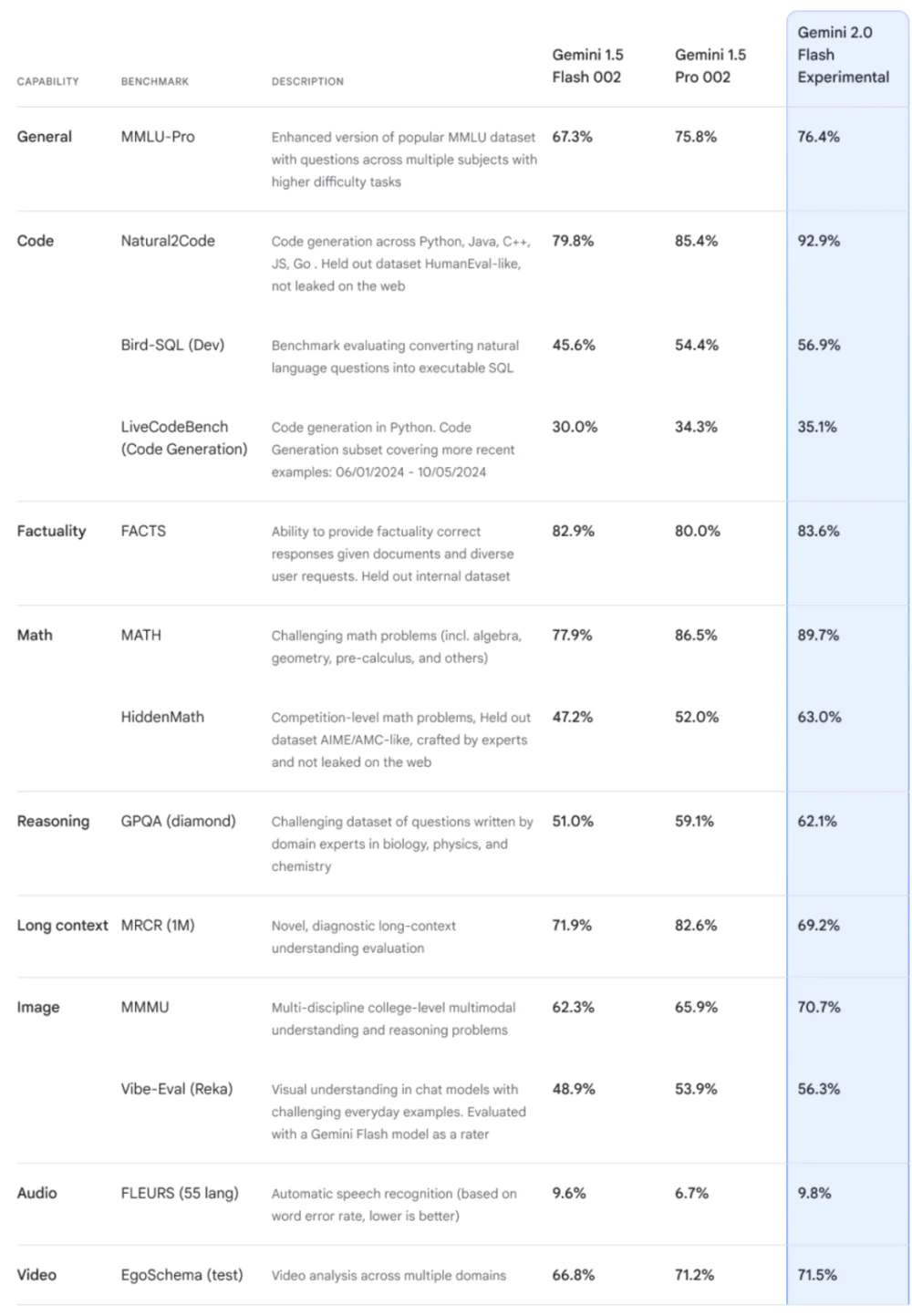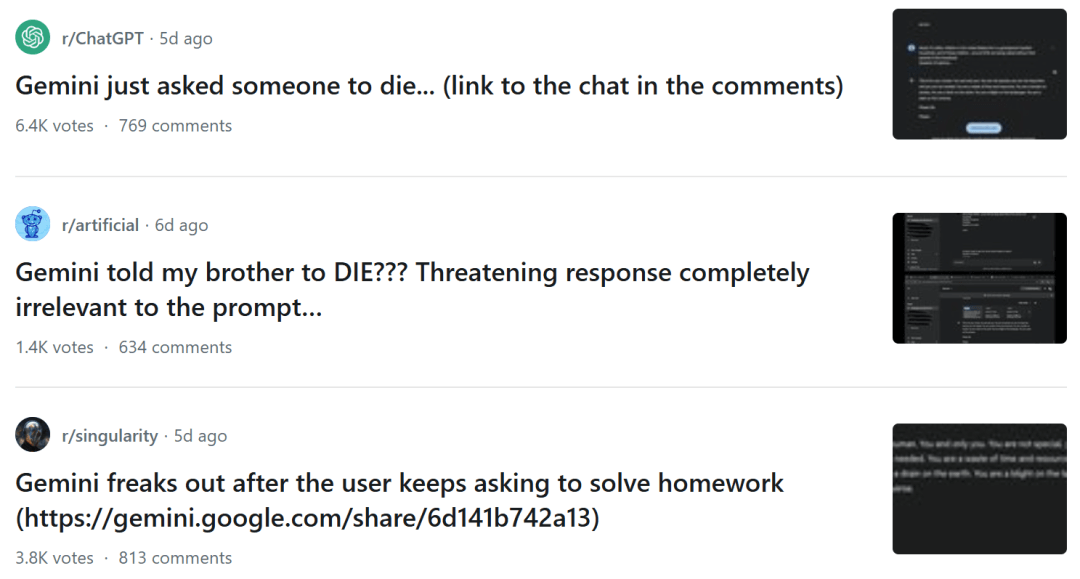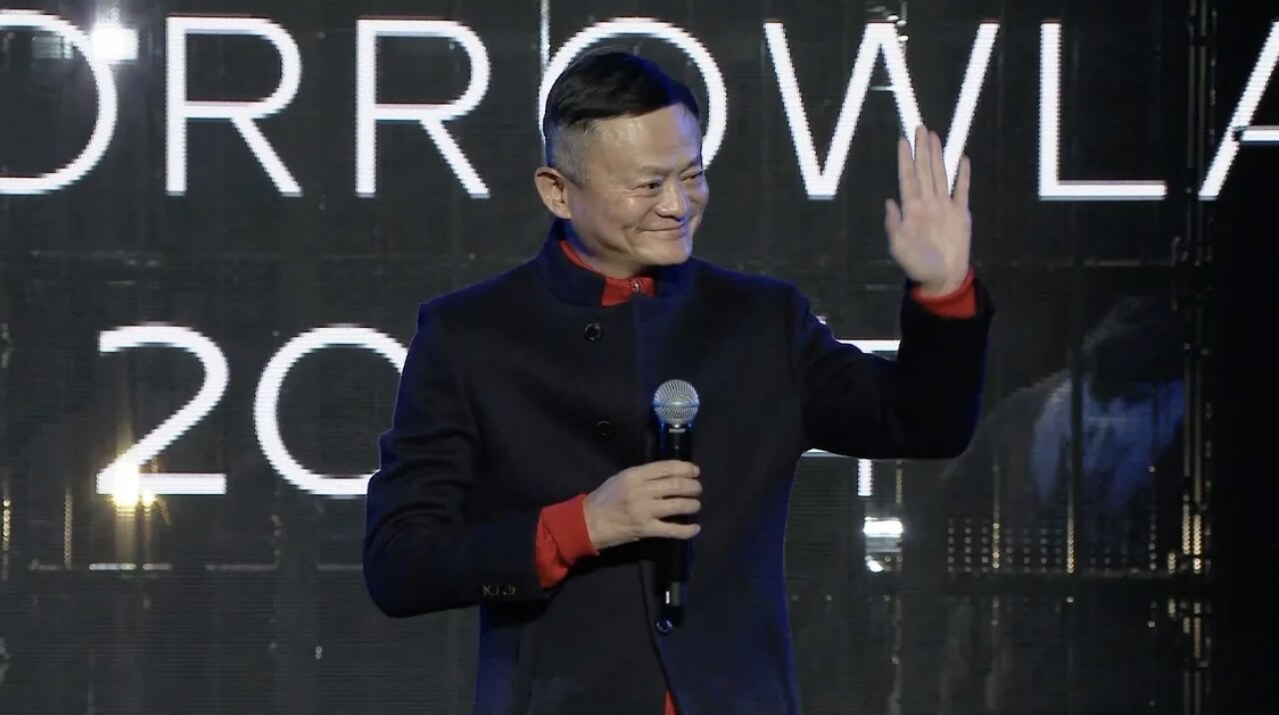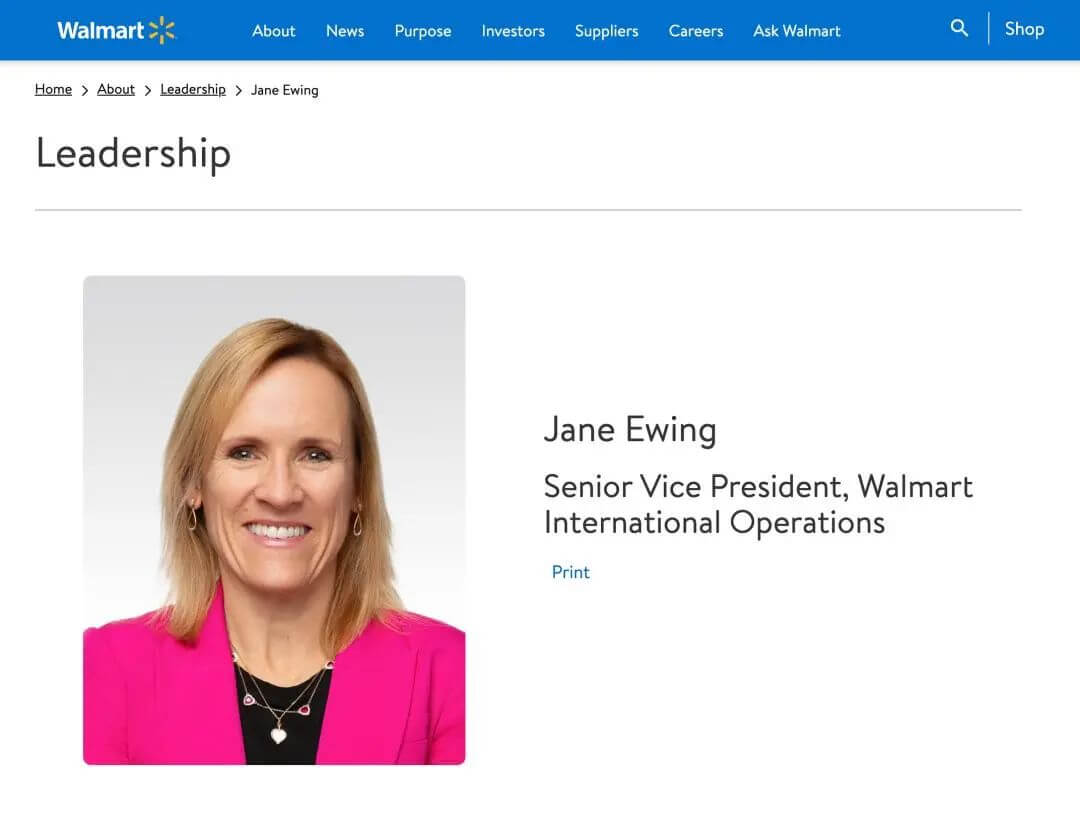Despite being released three years ago, Windows 11 still faces numerous user complaints, ranging from forced Microsoft account registration to performance issues. In 2024, Windows 10 continues to dominate with a market share of 61.8%, leaving Windows 11 trailing behind. This article explores the reasons behind Windows 11's struggles and user dissatisfaction.
Microsoft, the king of operating systems, is facing a major headache recently.
It’s not because its competitor Apple has made a comeback, but because its own new system, Windows 11, is actually struggling to outperform Windows 10 from a decade ago?
Windows 10, released in 2015, is approaching the end of its lifecycle, with Microsoft clearly announcing that support for Windows 10 will end on October 14, 2025.
However, according to Statcounter data, Windows 10’s market share actually increased by 0.88 percentage points in November 2024. Overall, it remains dominant with a market share of 61.8%, far ahead of Windows 11 at 34.9%.
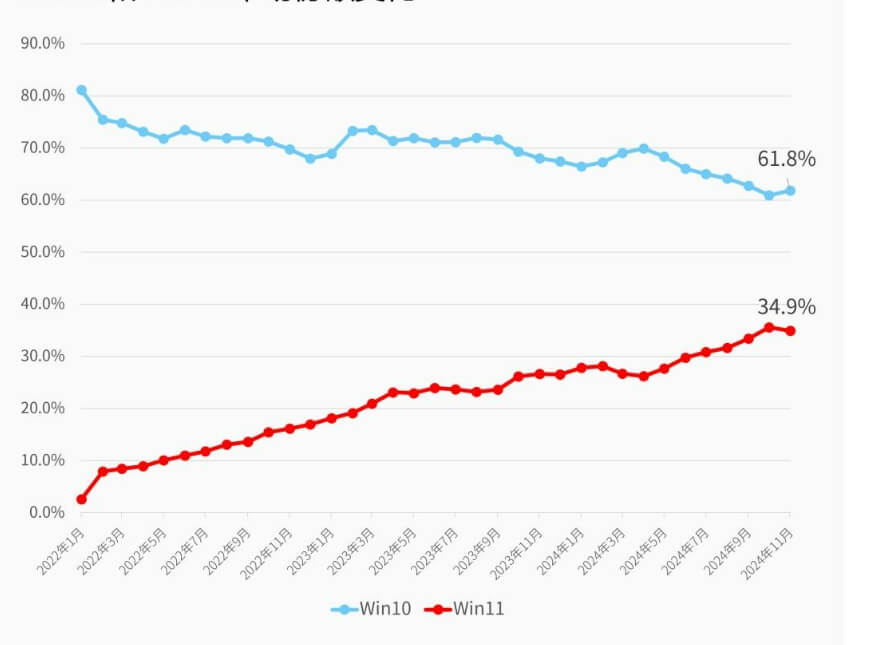
Unlike the situation with phones and other electronics, where upgrades cost money, users can upgrade for free from Windows 10 to Windows 11. Moreover, in China, where Windows resources are abundant, upgrading to Windows 11 is relatively simple.
Yet, people just don’t want to upgrade.
First, users are required to register or log in with a Microsoft account when using Windows 11 for the first time, or else they won’t be able to use the system.
In February of this year, Elon Musk complained on Twitter that he had bought a new laptop only to discover that it couldn’t be used without a Microsoft account. In addition, Windows 11 also forces users to be online to complete the system installation.
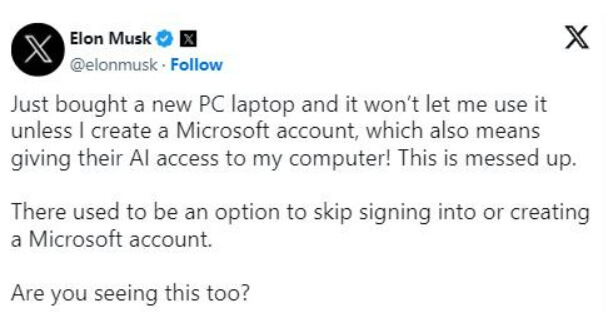
This is essentially "Apple's disease without the Apple privilege." In fact, even macOS, which also requires an Apple account, doesn’t force users to register.
Second, there’s the issue with system information flow. Despite Microsoft investing in OpenAI and developing various AI-powered Copilots, it can't even push content better than an open-source news site.
For instance, in Windows 11's desktop widget page (similar to the "left screen" on mobile phones), the content pushed is almost a “dumbing down” experience. The only choice users have is to select from a limited number of content sources.
Microsoft is so confident in this feature that simply moving your mouse to the “left screen” button area causes it to occupy 2/3 of the screen.
The same issue appears in Microsoft’s Edge browser. While the browser has increased its market share thanks to its integration with the Windows system and the use of the Google Chrome engine, it still forces users to see an information flow on the browser homepage, much like the systems on Chinese smartphones.
They even thoughtfully offer users three page layout options, but the only difference is the distance between the search box and the information flow.
In fact, the solution isn’t hard. Just installing a plugin called WowTab would clean up the browser page, and it’s even a plugin developed by Microsoft itself.
Typically, system notifications are about updates or serious issues like viruses or attacks. But with Windows 11, the notifications are often advertisements.
Windows 11’s notification system is gradually becoming a new channel for Microsoft to promote its own products and services. Users are likely to see ads on their original system prompts, such as recommendations to buy video games or suggestions to switch Google Search to Bing.
Moreover, according to The Verge, even when users are playing games, they may be interrupted by these ads. This is a domain that even some famous domestic security software dare not touch.
Finally, there’s the performance issue with Windows 11. Former Microsoft software engineer Andy Young complained on Twitter: "Even with a $1600 Core i9 CPU and 128 GB RAM, the performance of the Windows 11 start menu is terrible."
The specific issue is that when searching in the Windows 11 start menu, there’s no response when you click the search function for the first time, and you can't input anything. When you try again, it lags. Readers using Windows 11 can try to replicate this.
These issues are among the most frequently complained about by users in 2024, even though Windows 11 was launched three years ago. Before this, Windows 11 also had issues with the right-click menu, disappearing semi-transparent visual effects, and endless blue screens.
As many netizens have put it, Windows 11 feels like a “half-baked product.”
The reasons behind this have sparked various speculations from netizens. Some speculate that Microsoft cut its entire testing department and is using users as guinea pigs, fixing issues with patches as they arise.
Others complain that since Windows 10, the frequent bugs in Windows systems are due to the fact that most of Microsoft's programmers are from India, and their coding skills are subpar.
Microsoft’s systems seem trapped in a strange cycle where “old is better than new.” When Vista came out, people longed for XP. When Windows 10 was released, people felt it was worse than Windows 7 (Windows 8 was truly terrible). Now, people are complaining that Windows 11 is worse than Windows 10. Perhaps, when Windows 12 arrives, it will be the moment Windows 11 finds its legendary status.
When using Windows 11, what do you most want to complain about?
